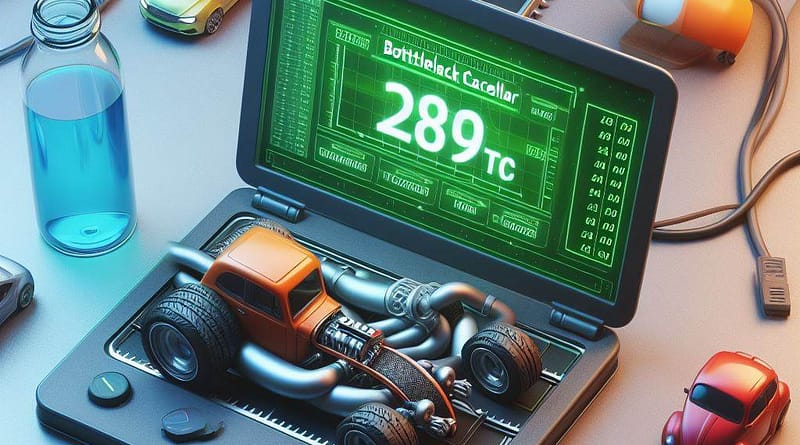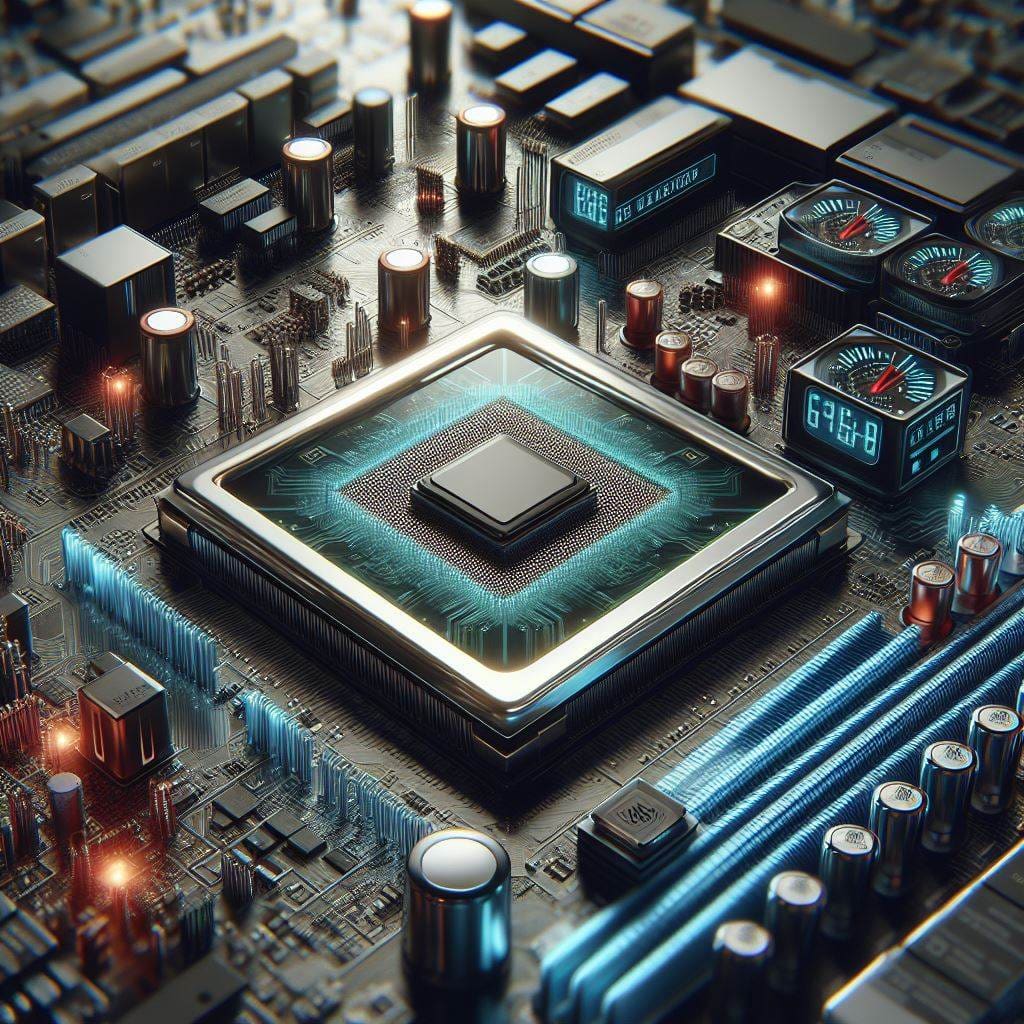Bottleneck Calculator: Optimizing Your PC’s Performance
Introduction:
In the world of PC gaming and performance optimization, understanding the concept of bottlenecking is crucial. A bottleneck occurs when one component of your PC’s hardware limits the performance potential of the entire system. To accurately assess and address bottlenecks, a bottleneck calculator can be a valuable tool. In this article, we will explore how to calculate bottleneck, the accuracy of bottleneck calculators, and various aspects related to optimizing your PC’s performance.
What is a Bottleneck?
A bottleneck occurs when one component of your PC’s hardware limits the performance potential of the entire system. It’s like having a narrow bottleneck in a pipeline that restricts the flow of water. In the case of a PC, bottlenecks can happen when the CPU, GPU, RAM, or other components are not balanced in terms of performance. This can lead to decreased overall performance and hinder your gaming or computing experience.

How to Calculate Bottleneck?
Calculating bottleneck in your PC involves identifying the component that is causing performance limitations. Here’s a step-by-step guide on how to calculate bottleneck:
- Identify the key components: Determine the critical hardware components that affect your PC’s performance, such as the CPU (Central Processing Unit) and GPU (Graphics Processing Unit).
- Measure the performance: Utilize benchmarking tools to measure the performance of your CPU and GPU. This will provide you with a baseline for comparison.
- Analyze the results: Compare the performance of your CPU and GPU. If one component significantly outperforms the other, it may indicate a bottleneck.
- Consider other factors: Keep in mind that bottlenecking can also be influenced by factors like RAM (Random Access Memory), storage speed, and software optimization.
How to Calculate Bottleneck Time:
Bottleneck time refers to the duration for which a bottleneck occurs during a specific task or operation. To calculate bottleneck time, follow these steps:
- Identify the task: Determine the specific task or operation that you want to analyze for bottleneck time, such as gaming, video editing, or rendering.
- Measure the time: Perform the task or operation while monitoring the CPU and GPU usage. Use monitoring software to record the time taken for the bottleneck to occur.
- Analyze the data: Compare the time taken for the bottleneck to the overall duration of the task. This will help you understand the extent of the bottleneck and its impact on performance.
Are Bottleneck Calculators Accurate?
Bottleneck calculators can provide a rough estimate of potential bottlenecks in your PC. However, it’s important to note that they are not always 100% accurate. Several factors can affect the accuracy of bottleneck calculators, including:
- Variations in hardware performance: Different models and variations of CPUs and GPUs can have varying performance levels, making it challenging to provide precise calculations.
- Software optimization: Bottleneck calculators rely on assumptions about software optimization, which can vary across different applications and games.
- Real-world usage: Bottleneck calculators may not account for real-world usage scenarios, where multiple tasks and applications are running simultaneously.
While bottleneck calculators can be a useful starting point, it’s recommended to combine their results with manual analysis and benchmarking for a more accurate assessment.
How to Calculate Bottleneck CPU GPU?
Calculating the bottleneck between your CPU and GPU involves comparing their performance metrics. Here’s how to calculate the CPU-GPU bottleneck:
- Measure CPU and GPU performance: Use benchmarking tools to measure the performance of your CPU and GPU separately.
- Compare the results: Analyze the benchmark scores or performance metrics of your CPU and GPU. Look for significant disparities in performance.
- Identify the bottleneck: If one component consistently outperforms the other by a significant margin, it may indicate a CPU-GPU bottleneck.
- Consider other factors: Remember that other hardware components, such as RAM and storage, can also contribute to bottlenecking. Take these factors into account when assessing the CPU-GPU bottleneck.
How to Calculate Bottleneck Cycle Time:
Bottleneck cycle time refers to the time it takes for a bottleneck to complete a full cycle. To calculate bottleneck cycle time, follow these steps:
- Identify the bottleneck: Determine the specific component that is causing the bottleneck in your PC.
- Measure the time: Monitor the duration it takes for the bottleneck to complete a full cycle. This can be done using monitoring software or by observing performance metrics.
- Analyze the data: Compare the bottleneck cycle time to the overall cycle time of the system. This will help you understand the impact of the bottleneck on the overall performance.
Conclusion:
Optimizing your PC’s performance is essential for an enhanced gaming and computing experience. By understandingthe concept of bottlenecks and how to calculate them, you can identify and address performance limitations in your system. The Bottleneck Calculator is a useful tool for estimating potential bottlenecks, but it’s important to remember that its accuracy may vary. Combining the results from the calculator with manual analysis and benchmarking will provide a more accurate assessment.
When calculating bottlenecks, consider factors such as CPU-GPU imbalances and bottleneck cycle time. By identifying the specific components causing the bottleneck and taking appropriate steps to address them, you can optimize your PC’s performance and unlock its full potential.
Remember, optimizing your PC is an ongoing process. As technology advances and new hardware becomes available, it’s important to stay updated and make necessary upgrades to keep your system running smoothly. With the right knowledge and tools, you can ensure that your PC is always performing at its best.
FAQ:
1. How accurate are bottleneck calculators?
Bottleneck calculators provide a rough estimate of potential bottlenecks in your PC. However, their accuracy can be influenced by factors such as variations in hardware performance, software optimization, and real-world usage scenarios. It’s recommended to combine their results with manual analysis and benchmarking for a more accurate assessment.
2. How do I calculate the bottleneck between my CPU and GPU?
To calculate the CPU-GPU bottleneck, measure the performance of your CPU and GPU separately using benchmarking tools. Compare the results and look for significant disparities in performance. If one component consistently outperforms the other by a significant margin, it may indicate a CPU-GPU bottleneck.
3. What is bottleneck time and how do I calculate it?
Bottleneck time refers to the duration for which a bottleneck occurs during a specific task or operation. To calculate bottleneck time, perform the task while monitoring the CPU and GPU usage. Use monitoring software to record the time taken for the bottleneck to occur. Compare this time to the overall duration of the task to understand the extent of the bottleneck’s impact on performance.
4. Can bottleneck calculators account for real-world usage scenarios?
Bottleneck calculators may not fully account for real-world usage scenarios where multiple tasks and applications are running simultaneously. They often rely on assumptions about software optimization, which can vary across different applications and games. It’s important to consider these factors and combine bottleneck calculator results with manual analysis for a more accurate assessment.
5. What is bottleneck cycle time and how can I calculate it?
Bottleneck cycle time refers to the time it takes for a bottleneck to complete a full cycle. To calculate bottleneck cycle time, identify the specific component causing the bottleneck and monitor the duration it takes for the bottleneck to complete a full cycle. Compare this time to the overall cycle time of the system to understand the impact of the bottleneck on performance.
Remember, optimizing your PC’s performance goes beyond just calculating bottlenecks. It’s essential to consider other factors like RAM, storage speed, and software optimization. By following the steps outlined in this article and utilizing the bottleneck calculator as a starting point, you can identify and address performance limitations, ensuring a smooth and efficient computing experience.










